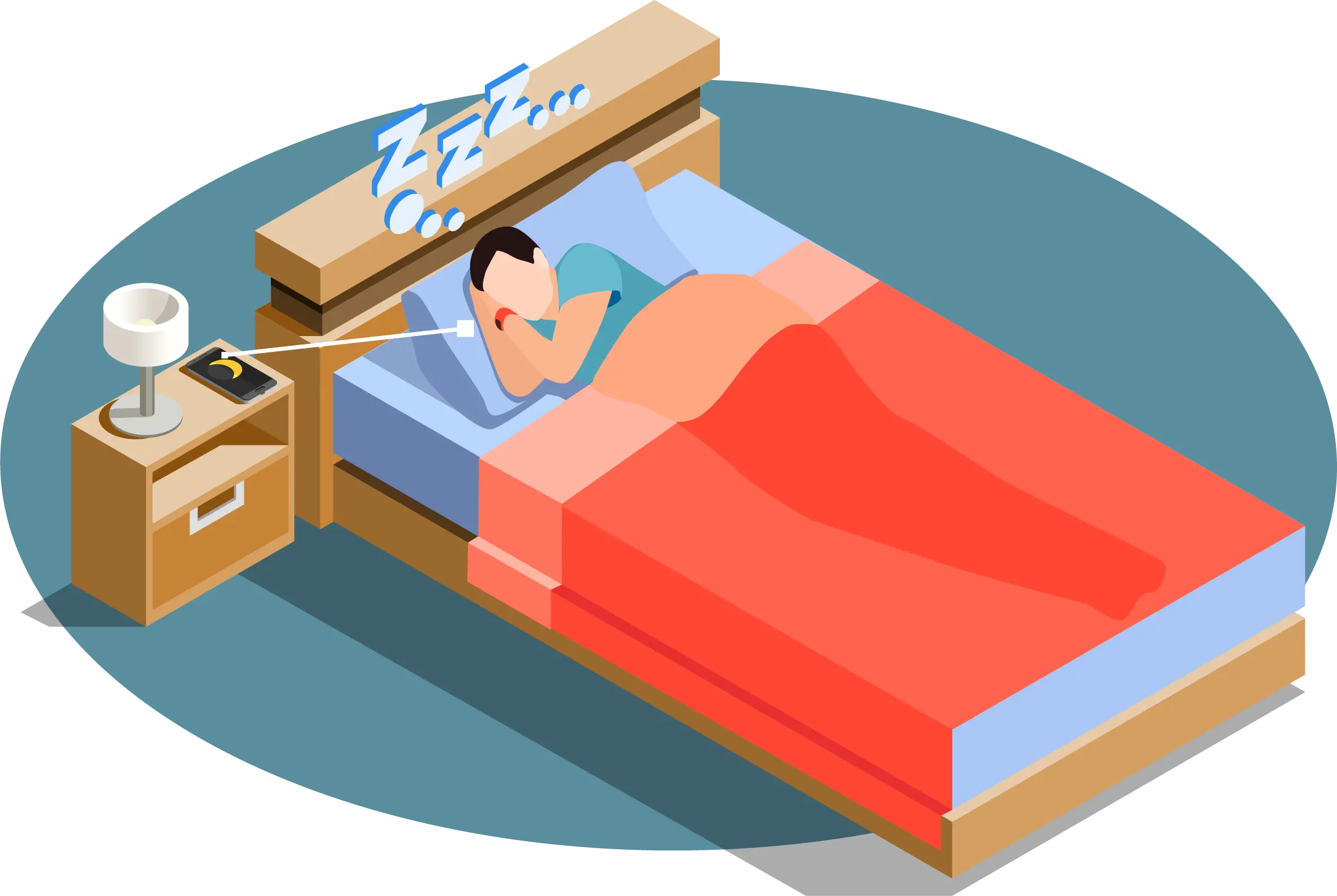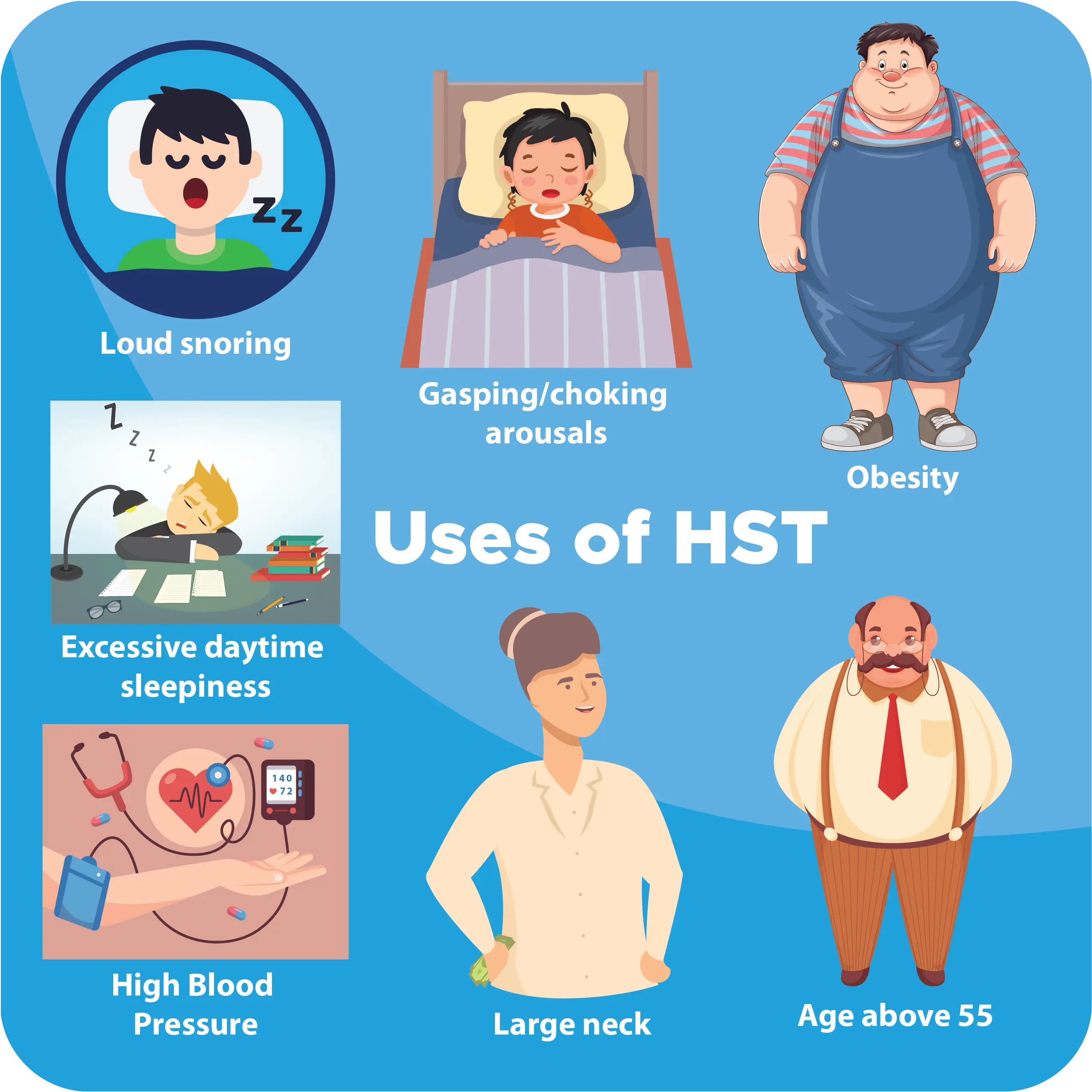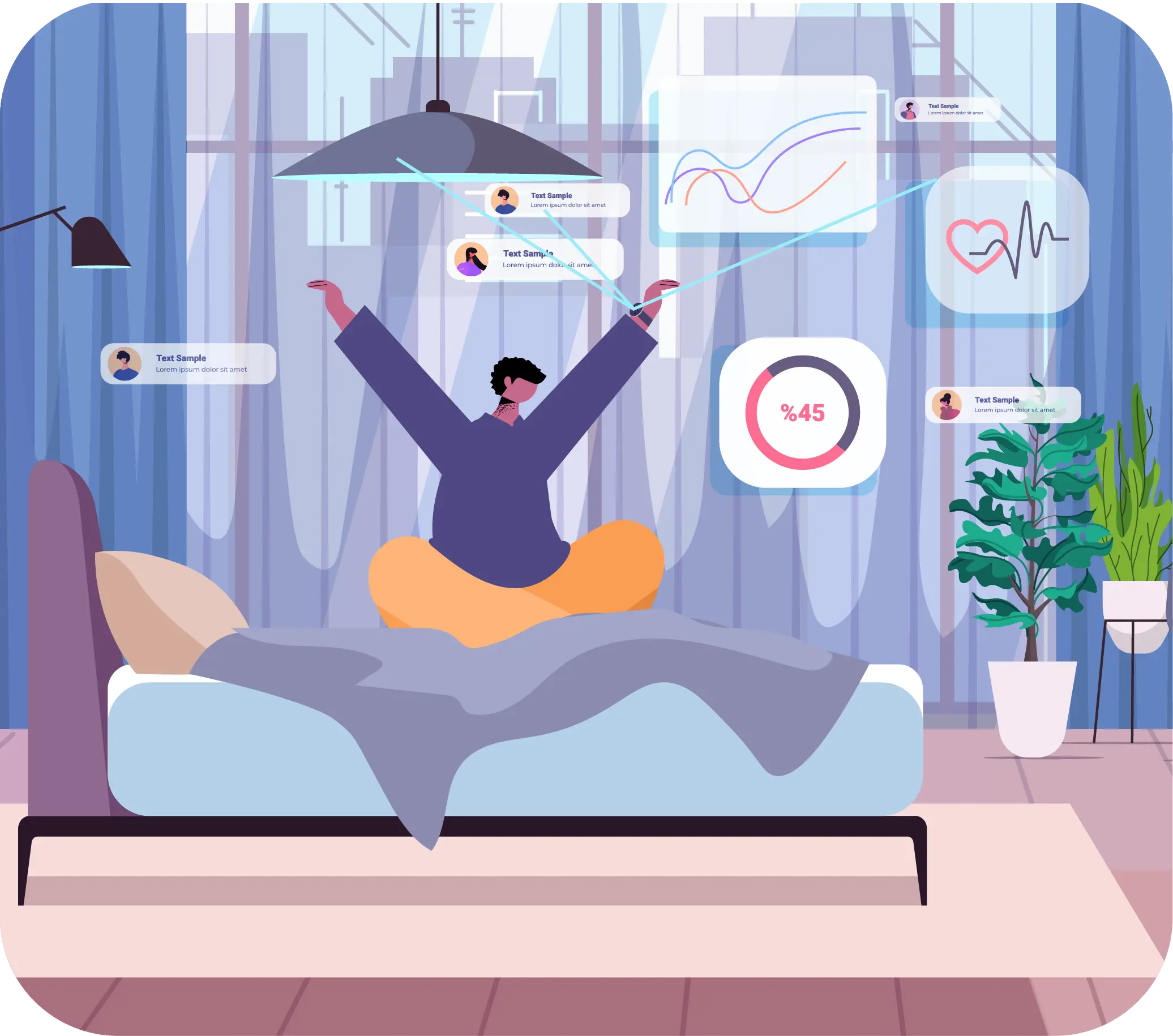Home Sleep Testing: Uses, Pros and Cons
Obstructive Sleep Apnea (OSA) is a condition caused by intermittent and repetitive episodes of partial or complete cessation of airflow due to the collapse of upper airways. As a result of this airway collapse, oxygen level drops in the body causing a negative impact on your health. In order to detect OSA, in addition to symptoms, a test called sleep study is required. The sleep study can be done either in a brick-and-mortar sleep center or at home. When done in a sleep center, the sleep study is called a polysomnogram (PSG).
When sleep study is done in the comfort of a patient’s own home, it is called Home Sleep Apnea Testing (HSAT) aka Home Sleep Test (HST).

What is a Home Sleep Test or Home Sleep Apnea Test?
Over the last few years, home sleep apnea test have gained popularity in the field of sleep medicine because of its convenience, cost-effectiveness, practicality, and efficiency in detecting Obstructive Sleep Apnea (OSA).
Depending on the HST device, different physiologic parameters are recorded. These may include total sleep time, sleep stages, body movement, blood oxygen levels, heart rate, breathing patterns, sleep position, the number of apneas breathing pauses, etc.

Common indications for getting HST done
Your provider may order an home sleep test if the following are present:
- Loud snoring
- People report that the patient stopped breathing while sleeping
- Gasping/choking arousals
- Excessive daytime sleepiness
- You are being treated for high blood pressure
- Large neck
- Obesity
- Male
- Age above 55
If you have at least three of the above risk factors or symptoms for sleep apnea, talk to your clinician to see if you are a good candidate for HSAT.
When is HST not the right test for you?
- When your doctor suspects sleep disorders other than Obstructive Sleep Apnea.
- If you have any significant heart problems, like heart failure or lung disease.
- If you have a neuromuscular condition causing respiratory muscle weakness.
- If there is hypoventilation, be it awake or sleep-related.
- If you have a history of stroke.
- Severe Insomnia.
Depending on home sleep testing kits, if you don’t have a good wifi or don't have the ability to download apps, patient preference, environmental factors, etc.

Pros of Home Sleep Apnea Test
Convenience: Home sleep apnea test does not need the supervision of a sleep technologist. Patients apply the device themselves.
Comfort: Home sleep apnea test gets done in your familiar sleep environment.
Cost-effective: Home sleep apnea testing is significantly less expensive than an in-lab sleep study. The cost of HST is usually a few hundred bucks, while an in-lab sleep study runs into thousands of dollars.
Accessibility: HSAT makes sleep apnea testing available to a larger population, particularly those who live in remote or rural locations and have little access to specialized sleep clinics.
Natural sleep setting: When compared to sleeping in a lab, testing at home gives patients a chance to sleep in their familiar sleep settings.

Cons of Home Sleep Apnea Test

Limited data collection: When compared to in-lab studies, home sleep apnea testing may only yield a small amount of information, which could compromise the precision and thoroughness of the diagnosis.
Dependence on self-setup: The accuracy of the at home sleep test depends on the subject’s capacity to set up and operate the monitoring equipment accurately in accordance with the guidelines supplied.
Lack of real-time monitoring: Unlike in-lab studies, the HSAT does not allow for real-time monitoring, adjustments, or treatment to be done in order to improve the test apparatus or address problems.
Limited diagnostic range: HSAT is meant only for Obstructive Sleep Apnea (OSA). It can’t be used to identify sleep disorders other than OSA. However, in-lab sleep study is able to identify OSA and other sleep disorders.
Conclusion
The ability to conduct testing in a familiar and comfortable environment makes at home sleep apnea testing a practical and affordable method of diagnosing sleep apnea. While it offers a number of benefits, like price and simplicity, it’s important to balance these against the drawbacks. It is essential to seek the advice of a healthcare professional to choose the best sleep testing based on your needs to ensure timely and correct diagnosis and to get customized treatment. Telemedora excels in providing timely and comprehensive virtual sleep care, including home sleep apnea testing and treatment. To see a board-certified sleep physician, simply call us at 650-687-7368.



